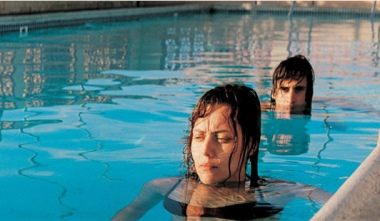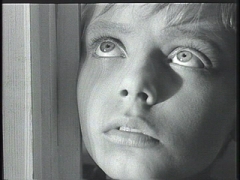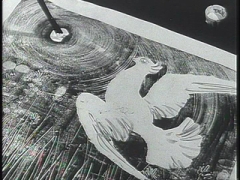 Frequently hailed as one of the greatest living filmmakers, this is Hou Hsiao Hsien’s first film outside of China/Taiwan. Hou dedicated the film to Lamorisse, whose Le ballon rouge inspired this material. At once, it is easy to spot the brilliance in his filmmaking, as the camera tracks the titular red balloon gliding across the streets of Paris, cowering behind tree-branches and deftly maneuvering the train station. The balloon is of course symbolic: here representing childhood and an age of innocence, indifference and freedom, such as that of little Simon. Simon’s mother, Suzanne (Binoche) on the other hand is a busybody, constantly occupied with work and sparing little time for her son who is tended to by a timid babysitter Song.
Frequently hailed as one of the greatest living filmmakers, this is Hou Hsiao Hsien’s first film outside of China/Taiwan. Hou dedicated the film to Lamorisse, whose Le ballon rouge inspired this material. At once, it is easy to spot the brilliance in his filmmaking, as the camera tracks the titular red balloon gliding across the streets of Paris, cowering behind tree-branches and deftly maneuvering the train station. The balloon is of course symbolic: here representing childhood and an age of innocence, indifference and freedom, such as that of little Simon. Simon’s mother, Suzanne (Binoche) on the other hand is a busybody, constantly occupied with work and sparing little time for her son who is tended to by a timid babysitter Song.
Hou is extremely observant, both of his environment and of his characters. And to me, that’s also where his film fails. The film observes, but never probes. It never questions the characters, never expresses them, maybe even expose them. Understandably, with the boy Simon, it is quite difficult to formally develop the character (although Vlacil did it in a shorter time with The white dove) and Hou tracks the child across his routines of playing pinball, learning the piano or playing video games on his playstation. But Suzanne just turns out to be a bundle of mess – constantly being irritated by her neighbours, possibly feeling distanced from her other adolescent child, and desperately missing her husband now in Canada. She uses her teenage daughter as a pretext for kicking out her neighbours, and struggles to communicate with Simon, who incidentally feels quite at ease with his babysitter and half-sister.
What I liked most about this film was its use of space. Hou juxtaposes the insides of the tiny Paris apartment with wide-angle shots of the balloon floating above Paris. This mimics the dichotomy of the film’s themes: pure unrestrained freedom as opposed to a state of conformity and disorder. Even with the crummy apartment, Hou is careful enough to work within the limits. Observe how the film slowly “reveals” Suzanne’s apartment. For the first half-hour or so, all we see is the tiny dining table and the kitchen, and then we get a brief glimpse of Suzanne’s attic bedroom. Then the shabby living room with books sprawled across the floor, a TV and Simon’s playstation. Suddenly, the piano is moved into a corner we never knew existed. And then, the eternally meek and distant Song shows us Simon’s bedroom attic opposite Suzanne’s.
Hou’s conservative approach to filming spaces is surely what defines this film. But it shouldn’t have been so. If only he had expressed his characters more.

 Frantisek Vlacil’s The White Dove is an extraordinary film. Made in 1960, and part of the Czech New Wave, the film is beautifully done with frequent low angled shots lovingly looking upon the film’s characters, in particular capturing the desolation and crushed hopes of the young boy Michael (Michal) and the sullen beauty and melancholic appeal of the girl Susan.
Frantisek Vlacil’s The White Dove is an extraordinary film. Made in 1960, and part of the Czech New Wave, the film is beautifully done with frequent low angled shots lovingly looking upon the film’s characters, in particular capturing the desolation and crushed hopes of the young boy Michael (Michal) and the sullen beauty and melancholic appeal of the girl Susan. The dove belongs to Susan and has lost its way in a race. Susan represents the freedom that’s missing in Michal’s life. Surrounded by the calmness of the infinite sea, she lives an uninhibited and carefree life. Her sorrow and pain at having lost the dove is what connects her with Michal in a strange way. The dove in essence transfers her gaiety to Michal and infuses his dullness into her formerly vibrant self.
The dove belongs to Susan and has lost its way in a race. Susan represents the freedom that’s missing in Michal’s life. Surrounded by the calmness of the infinite sea, she lives an uninhibited and carefree life. Her sorrow and pain at having lost the dove is what connects her with Michal in a strange way. The dove in essence transfers her gaiety to Michal and infuses his dullness into her formerly vibrant self.